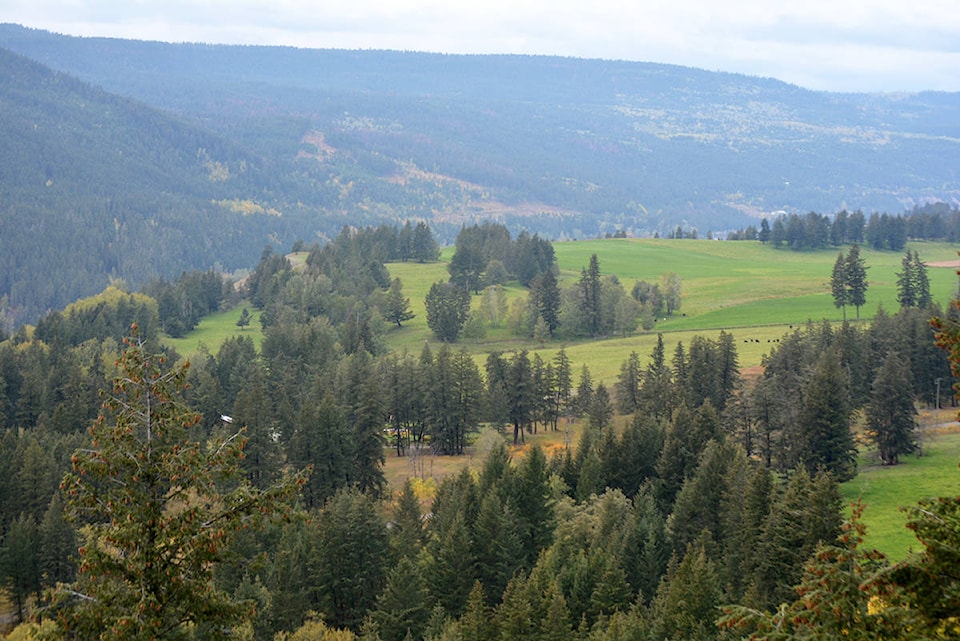David Zirnhelt
Special to the Tribune
In preparing for this week’s column, I enjoyed the change of colours and I spoke with my helpers and my grandchildren about observing.
I am downtown Vancouver writing in a coffee shop, waiting for someone.
If I were home, I would be be reasonably full out trying to do the fall list of “want-to’s and “have-to’s”. But to be sure I would be outside for the most of the day, enjoying where I was and noticing subtle changes around me as fall advances.
One can look into the virtual world to a different reality. Some visitors to the ranch do that. Checking messages and emails, maybe researching a word or an idea or a machine or how something on the ranch works e.g. a tractor, an electric fence.
The virtual world does not as far as I know give real time information about the recent cattle coming home or the fall regrowth on fields and pastures. One has to look to get that information.
As we travel through this big piece of landscape we call a ranch, we need to look through the trees so we can see if the cow herd is where they are supposed to be. In our case there are only a few places on the road where we can see the pasture.
Most passengers in vehicles I am driving that are not familiar with ranch or country life will watch the road. As driver I am doing this. They can be scanning the sides of the road. They just might see a bear, moose, or a cow coming home.
Read more: Problem bear season begins in the Cariboo
A good observer will know which neighbour’s vehicle crossed our tracks from earlier that day. One might just need to know if they are home before we drive miles to see them!
Or we might want to know if a moose or bear has passed this way, or a wolf, or a big cat. Any of these observations might clue us into the behavior of the cattle. The tracks should make us aware of their presence.
Someone a few years ago wrote that modern life has reduced our capacity to observe what is going on in nature; response to weather, human presence or climate might just be critical information for a successful ranching operation.
Technology (weather records, pictures, growth measurements,) can keep information and enhance it, but the human mind is still the best “computer” of data bits. Human eyes and ears can gather information efficiently.
But we have to develop that observation capacity and not dull it with excessive information extraneous to the tasks at hand.
If the cows are out of their pasture, how did they get out and which way did they go. This seems basic enough, but still not the practice of the young or those raised elsewhere particularly in the
concrete jungle.
I am guilty doing so much that I don’t always see what is going on around me.
Granted focus is a necessary for getting things done.
However, we (I! ) need to keep the lateral vision scanning what is going on around us.
Enjoying the changes of the seasons can be a necessary upside of the workload: getting the cows home, getting the soil and feed samples done, fixing fence in areas you can’t get to in winter or spring, checking water sources for livestock, checking fall pasture for returning cows, attending fall meetings and sourcing feed supplements.
Then there are the many “away” conferences and learning opportunities that are part of farming today. Did I say tax planning before the fiscal year end. What about a break after a long summer of haying and fall roundup?
I am on break waiting to get home to do all the things I want to and watch the colours heighten, a fade and fall as we dig and dry the garden’s root crops. Freeze up is coming; get the boats out of the water and the shoes off the horses.
Go on I could, but won’t, I am enjoying some of the time away. This is life on the land, in a beautiful land.
David Zirnhelt is a rancher and member of the Cariboo Cattlemen’s Association. He is also chair of the Advisory Committee for the Applied Sustainable Ranching Program at TRU.
Read more: Video: Sandhill Cranes in abundance along Highway 97 south of Quesnel
news@wltribune.com
Like us on Facebook and follow us on Twitter
